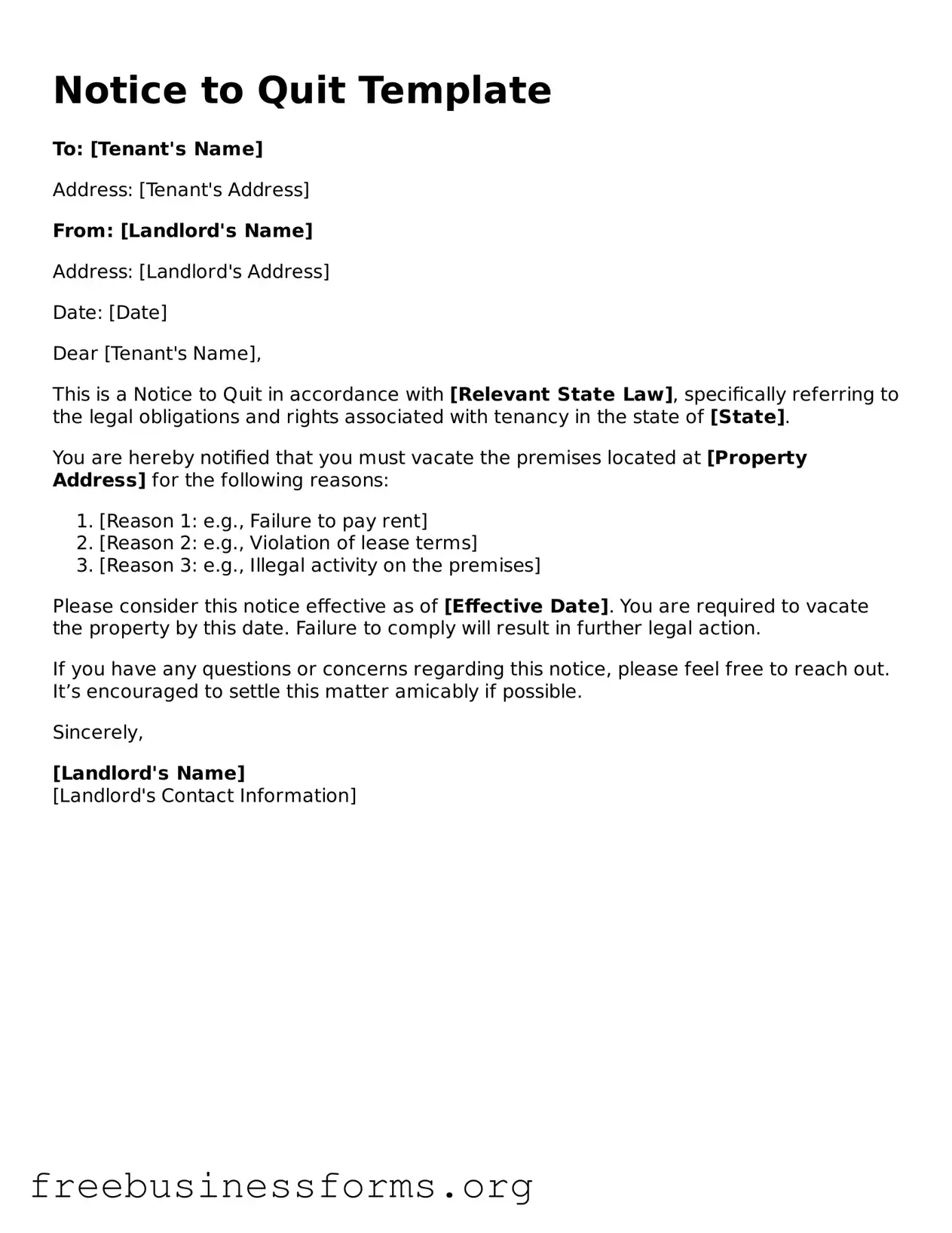Notice to Quit Template
To: [Tenant's Name]
Address: [Tenant's Address]
From: [Landlord's Name]
Address: [Landlord's Address]
Date: [Date]
Dear [Tenant's Name],
This is a Notice to Quit in accordance with [Relevant State Law], specifically referring to the legal obligations and rights associated with tenancy in the state of [State].
You are hereby notified that you must vacate the premises located at [Property Address] for the following reasons:
- [Reason 1: e.g., Failure to pay rent]
- [Reason 2: e.g., Violation of lease terms]
- [Reason 3: e.g., Illegal activity on the premises]
Please consider this notice effective as of [Effective Date]. You are required to vacate the property by this date. Failure to comply will result in further legal action.
If you have any questions or concerns regarding this notice, please feel free to reach out. It’s encouraged to settle this matter amicably if possible.
Sincerely,
[Landlord's Name]
[Landlord's Contact Information]
